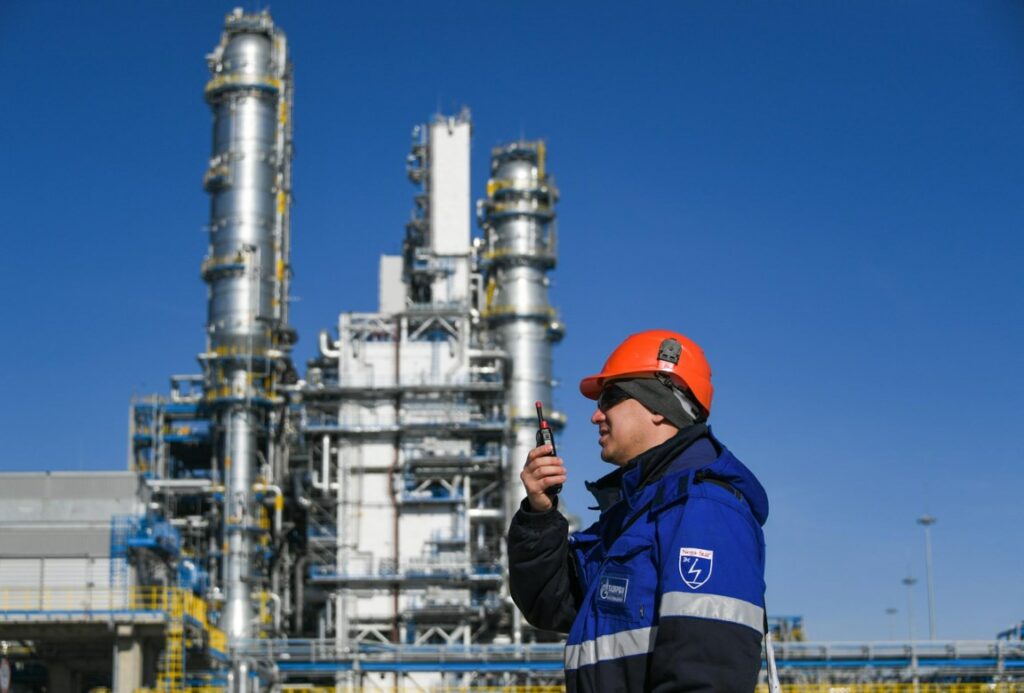Despite tightening energy sanctions on Russia following its invasion of Ukraine, and EU authorities implementing a ban on Russian oil, petrol and gasoline from entering European ports from Sunday, new statistics prove that the EU is still importing massive amounts of Russian energy.
According to statistics from NGO Greenpeace, communicated to Belgian newspaper Le Soir, since the start of the war, the EU imported 36% more Russian liquified natural gas, compared to 2021. This trend is accelerated by Belgium, with the LNG terminal at Zeebrugge being one of the largest regasification sites in all of Europe.
While the supply of pipeline gas to Europe has practically dried up, LNG exports are on the up. In Belgium, these imports have increased by 28%. Between March and October 2022, €1.6 billion of Russian LNG flowed through the country. Belgium serves as a gateway for Russian LNG to flow to other European countries.
Despite the upcoming ban, Belgium also imported at least 190 tankers filled with Russian petroleum products, which entered the Flemish ports of Antwerp and Ghent. In total, this amounts to over 9.2 million cubic metres of diesel and other fuels.
In reality, Belgium consumes very little of the imported LNG itself, but the regasification and sale of the imports are a considerable cash cow for the Belgian economy. While Russia has used LNG exports as a means to offset the loss of pipeline gas, much of these exports have also been redirected to Asia. China, once a net importer, exported record amounts of Russian LNG to the rest of the world last year.
A step back for the environment
Greenpeace denounces the role of the port of Zeebrugge in Russia’s supply of gas to Asia. According to Le Soir, Russian transport company Yamal Trade transports liquified gas from Siberia to Zeebrugge with ice-breaking LNG carriers, where it is unloaded, temporarily stored, and injected into normal LNG carriers to be transported to Asia via the Suez Canal.
The NGO says that European oil embargos are hypocritical as, while they attempt to punish the Russian regime, they also give it new avenues to make bumper profits. Greenpeace says that LNG has a large environmental cost, with Europe becoming much more reliant on the fuel type since the start of the war. LNG exports have equally increased from the US and Qatar.
LNG has a larger carbon footprint than pipeline gas and thereby accelerates the climate crisis more, Greenpeace argues. Transforming LNG back from its liquid to gas state uses a lot of energy and is much less efficient that normal gas deliveries. LNG also allows for greater methane emissions.
Related News
- EU energy ministers reach historic agreement on gas price cap
- Russian budget hit hard by drop in energy exports
Many European countries, such as Germany, the Netherlands, and France have made massive investments into LNG. In the new post-Russia energy landscape of Europe, these countries are rapidly building LNG terminals to increase their dependence on the energy source. Ecologists argue that this is prolonging Europe’s dependence on fossil energy, rather than looking for solutions to the crisis.
As previously reported, EU countries imported 16.5 billion cubic metres of Russian LNG between January and September 2022. By the end of last year, EU gas consumption from LNG amounted to 35%, up from 20% in 2021.

